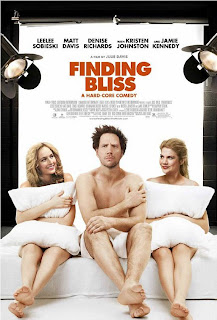Though a visual feast, "The Hobbit" drags feet through one-third of story
The Hobbit: An Unexpected Journey (2012)
169 min., rated PG-13.
In "Clerks II," Randal (Jeff Anderson) wasn't completely wrong in his cutting interpretation of the "The Lord of the Rings" trilogy, where he walked for "The Fellowship of the Ring," walked and stumbled for "The Two Towers," and walked and pretended to drop the One Ring into the volcanic Mount Doom for "The Return of the King." All three movies amounted to a lot of walking, but with a dazzling sense of awe, wonder, and joy in terms of visuals and storytelling, visionary director Peter Jackson turned J.R.R. Tolkien's fantasy-adventure trilogy into one grand, sprawling, spectacular film trilogy from 2001 to 2003. There's no denying Jackson's ambition in remaining faithful to Mr. Tolkien's stories by cramming in all appendices of Middle-earth lore, but his precluding chapter "The Hobbit: An Unexpected Journey" lives in the shadow of the "The Lord of the Rings" saga. The most fatal misjudgment is stretching out one slim, 300-page story into three epic movies, all nearing the three-hour mark. Could this approach be simply to milk the cash cow? Probably, but that inexplicable decision has done a disservice to this single movie in working on levels deeper than impressively pretty spectacle. Lumpy, bloated, and pretty tedious, "The Hobbit" only covers the first third of Tolkien's book and yet the journey still seems to go on forever.
We return to the green, grassy Shire, sixty years before Frodo (Elijah Wood) agreed to head to Mordor to destroy the One Ring. His uncle, Bilbo Baggins (Ian Holm), tells the story of his adventures when he was younger (Martin Freeman). Unbeknownst to the little, hairy-footed homebody, wizard Gandalf the Grey (Ian McKellen) invites a baker's dozen of homeless dwarves that come to Bilbo's door, expecting a dinner feast, and gorge on everything in his kitchen. Gandalf and all twelve dwarves, led by noble but skeptical dwarf king Thorin Oakenshield (Richard Armitage), recruit Bilbo as their "burglar" (he's qualified because of his tiny size) before setting off on their journey to take back Thorin's gold from the dragon Smaug.
Written by Jackson, his "LOTR" writing partners (Fran Welsch & Philippa Boyens), and Guillermo del Toro, "The Hobbit" doesn't exactly whisk us into the story. The previous pictures were even longer, but they knew how to move; here, the storytelling slips into such a stop-start rhythm that the pacing becomes draggy and the momentum grinds to a halt. For the first 40 minutes, there's dwarf merriment that's meant to be goofy and amusing but there's hardly any effort to develop most of the dwarves. Aside from Thorin, there are the handsome Kili (Aidan Turner) and Fili (Dean O'Gorman), the roly-poly Bombur (Stephen Hunter), and the rest just have bushy beards, odd physical attributes, and ravenous appetites. Once the characters finally get on the road, it boils down to a lot of wandering, battling, more battling, recovering, and repeat. The tangents involving loopy forest wizard Radagast the Brown (Sylvester McCoy) bring some whimsy and menace, but they do very little to further the story. Freeman is perfectly chosen as the younger Bilbo, knowing when to be fussy and uncertain, endearing, and often brave. As the wise Gandalf, McKellen always brings humor and gravitas. A stop in Rivendell (the Elven stronghold) marks the return of old "LOTR" players—Elrond (Hugo Weaving), Galadriel (Cate Blanchett), and Saruman (Christopher Lee)—as a nice nostalgic touch for Tolkien devotees. But best of all is the "introduction" of Gollum (Andy Serkis reprising the role through motion capture in his ping-pong ball suit), who's at his most threatening, frightening, unpredictable, and heartbreaking in only fifteen minutes of screen time.
Naturally, the CG visuals still offer a sense of splendor and the action is fluidly staged. A set-piece involving three giant, half-witted trolls is fun, as is one with rock-made monsters, but the perilous Orc attacks grow repetitive and hence much less exciting, sometimes ending with a deus ex machina. What those sequences often lack in tangible danger, dread, and tension are completely made up for when Gollum turns up. After falling into a cave, Bilbo comes upon the vicious, emaciated creature, plays a game of riddles, and then comes into possession of something "precious." The least of the film's problems, though still troubling, is the ballyhooed gambit of the 48-frames-per-second 3D technology (double the standard 24 fps). Jackson opted to shoot the film in HFR 3D, enhancing the brightness, crispness and lifelikeness of the fantastical universe Middle-earth. It's distracting on the onset, appearing jerky, less substantive, and akin to a high-def soap opera, but then becomes much less noticeable as the film goes along. It just depends on one's own set of eyes, but the film is available in five (yes, five) different formats, including 24 fps.
Grade: C +










Comments
Post a Comment